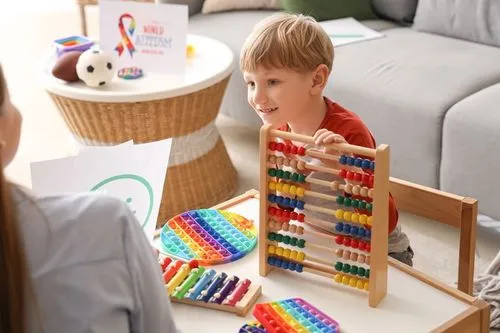A Childs Guide To Sensory Integration Activities For Autism
Sensory integration refers to the ability to process and respond to sensory information from the environment effectively. Many children with autism have sensory processing difficulties, and engaging in sensory integration activities can help them regulate their sensory experiences and promote overall well-being. In this blog, I will share a variety of sensory integration activities that can be beneficial and enjoyable for children with autism. Contact us at (630) 300-3400 or visit our locations to learn more about our services! or
Sensory Play With Textured Materials:
Engaging in sensory play with textured materials can be both stimulating and calming for children with autism. Provide a variety of materials, such as sand, water beads, kinetic sand, or rice bins, for exploration. Encourage your child to touch, squeeze, mold, and explore different textures. This type of play supports tactile sensory integration and promotes fine motor skills.
Swinging And Rocking:
Swinging and rocking activities can provide children with autism with proprioceptive and vestibular input, helping them regulate their body awareness and balance. Take your child to a playground with a swing or invest in a sensory swing at home. Rocking in a rocking chair or using a rocking horse can also provide soothing sensory input.
Calming Sensory Bottles:
Create calming sensory bottles using clear bottles filled with various materials, such as water, glitter, beads, or oil. These bottles can provide visual stimulation and a calming effect for children with autism. Encourage your child to shake or observe the bottles to promote visual tracking and relaxation.

Music And Movement:
Engage your child in music and movement activities to stimulate auditory and kinesthetic senses. Play their favorite songs and encourage them to dance, clap, or move to the rhythm. Use musical instruments or create a homemade band for added sensory input and enjoyment.
Outdoor Nature Exploration:
Outdoor activities can provide a wealth of sensory experiences for children with autism. Take your child on nature walks, visit local parks, or engage in gardening activities. Encourage them to touch leaves, smell flowers, listen to bird sounds, and explore different textures in nature. Outdoor exploration promotes sensory integration, curiosity, and a connection to the natural world.
Tactile Sensory Bin:
Create a tactile sensory bin by filling a container with materials like dry beans, rice, or sand. Hide small toys or objects within the bin for your child to discover. This activity provides tactile stimulation, promotes fine motor skills, and encourages exploration and imaginative play.
Water Play:
Water play activities can offer a calming and engaging sensory experience for children with autism. Fill a tub or basin with water and provide cups, funnels, and bath toys for your child to play with. Water play supports tactile and proprioceptive sensory integration, and it can also be used as a relaxation activity.
Sensory Walks:
Create a sensory walk at home or in a safe outdoor area by placing different textured materials on the ground, such as foam mats, rugs, or stepping stones. Encourage your child to walk barefoot or with socks to experience the varied textures. Sensory walks promote tactile and proprioceptive integration and can be a fun gross motor activity.
Engaging in sensory integration activities can have a profound impact on children with autism, supporting their sensory processing and overall well-being. By providing opportunities for sensory exploration, such as tactile play, swinging, calming sensory bottles, and outdoor nature exploration, parents can help their children regulate their sensory experiences and promote sensory integration. These activities not only provide enjoyable experiences but also promote the development of fine motor skills, body awareness, relaxation, and focus. Remember to tailor the activities to your child’s individual preferences and sensory needs, and always provide a safe and supportive environment. By incorporating these sensory integration activities into your child’s daily routine, you can help them thrive and reach their full potential.






